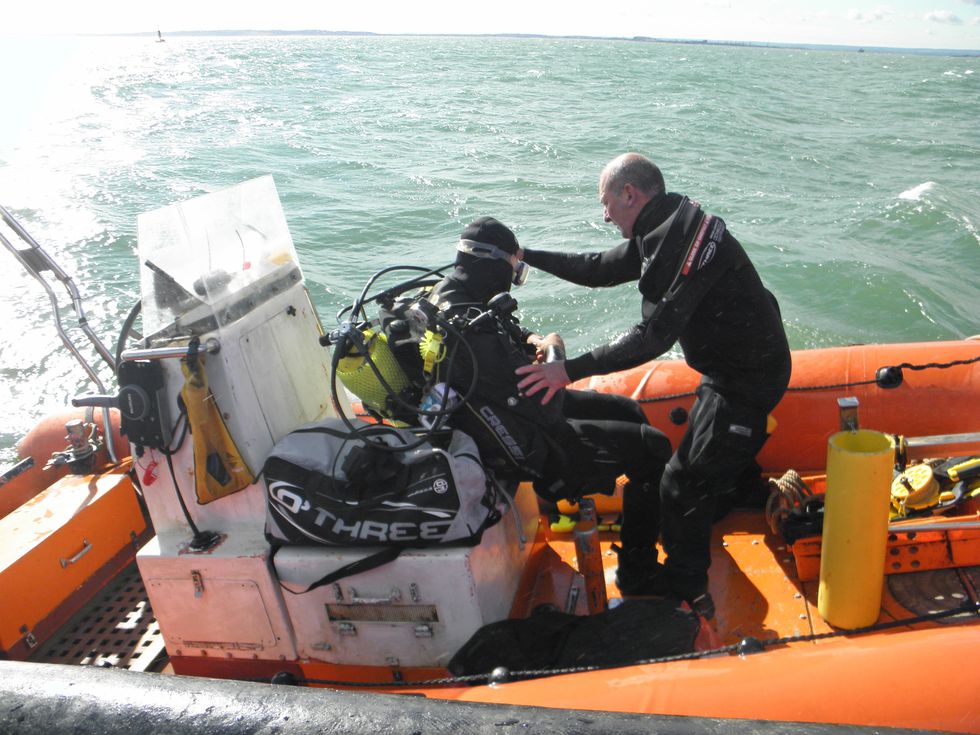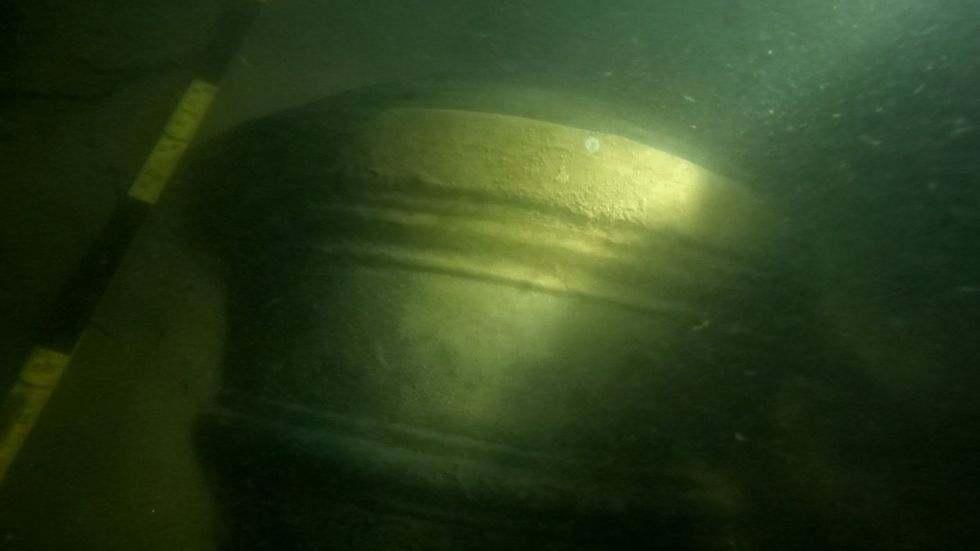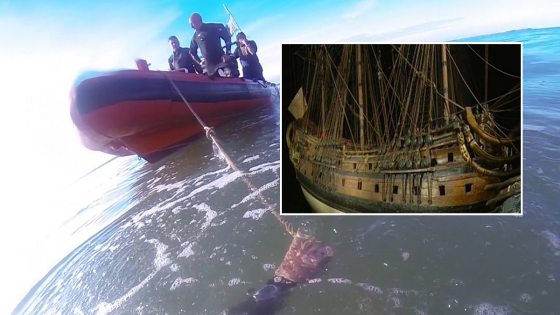An archaeologist diver has made a startling discovery that could solve the mystery of how a “nationally important” warship was destroyed.
Steve Ellis, one of Historic England’s licenced divers, has been diving the wreck site of The London for the last 14 years.
The wreck lies in two parts off Southend Pier in Essex, and formed part of a convoy sent in 1660 to collect Charles II from the Netherlands and restore him to the throne.
Now, a bronze cannon has been found in the wreck that Ellis says could reveal how the ship may have exploded and ended up in two pieces.
The cannon was recovered from the wreck
PA
He said: “It was so exciting to see the cannon emerge from the seabed after many years of diving the site.
“This discovery sheds new light on my theories about how the ship may have exploded and how it came to lie in two parts on the seabed.”
Chief executive of Historic England Duncan Wilson said: “This amazing discovery will help us to better understand the types of cannons on board the London when it blew up in 1665. They weren’t all the same as some were captured from enemy ships, so there is a complex story to unravel here.
“Our licensed divers play a huge part in investigating and monitoring our Protected Wrecks at sea, ensuring they are there for future generations to learn from and enjoy.”
LATEST DEVELOPMENTS

Divers preparing to dive in the Thames Estuary off Southend Pier
pa
The London was built at Chatham Historic Dockyard in Kent in 1654-1656 during a time of great political upheaval after the English Civil War (1642-1648) and the First Anglo-Dutch War (1652-1654).
The newly discovered cannon is believed to be a Commonwealth medium-sized 8ft by 6in Demi-cannon, cast by George Browne around 1656 to 1657. It is part of a set made for the London which was placed on the lower gun deck of the ship.
This type of cannon is larger than a culverin and smaller than a regular 42 pounder (19kg) cannon. It was discovered buried in silt and clay on the seabed.
At the time of its sinking, the London was one of only four English naval ships to have a full complement of 76 bronze cannons.

The cannon spotted in the wreckage
PA
Research work on the site is particularly challenging due to a highly tidal environment and the wreck’s location next to a busy shipping lane where large cargo vessels regularly pass by.
Chief executive of the Nautical Archaeology Society Mark Beattie-Edwards said: “For over a decade we have suspected that some of the cannons on board the London were still on the seabed, and now Steve and his team have proved it.
“The discovery demonstrates just how culturally rich the wreck is, and with the site actively eroding the potential for further similar finds remains ever present.”
Source Agencies



